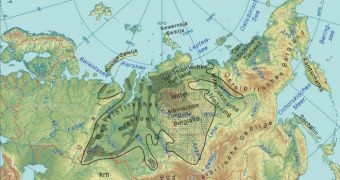A team of investigators from the United States proposed on Monday that the massive extinction event that marked the end of the Permian period may have been triggered by a vast volcanic eruption, traces of which endure even to this day.
The historic event, informally known as the “Great Dying,” managed to kill off more than 90 percent of all marine species living in oceans, seas, lakes and rivers, and approximately 70 percent of everything living on land at the time.
The fossil record and other sources show that the event most likely took place around 251.4 million years ago, at the boundary between the Permian and the Triassic. The latter fostered the development of dinosaurs, until the giant lizards were killed off at the end of the Cretaceous.
According to a new investigation, the P-T extinction event was so devastating because a massive volcanic eruption emitted vast amounts of particles in the atmosphere, that eventually depleted the ozone layer.
Without this protective shield, all life on Earth was battered with massive levels of ultraviolet radiations, which could have caused mutations in animals' genetic material, eventually leading to their demise.
This conclusion was drawn from analysis of 250-million-year-old Siberian lavas, which contain large amounts of the chemicals chlorine and fluorine. The work was carried out by graduate student Benjamin Black and a team of colleagues.
The investigators, all based at the Massachusetts Institute of Technology (MIT), presented the results of their research on December 13, at the 2010 annual fall meeting of the American Geophysical Union.
This work arrives not a day too soon, scientists in the field say, considering that an explanation for the Great Dying has been searched for for many years.
Analysis of the Siberian soil revealed that ancient volcanoes active around the P-T extinction event spewed out so much lava that it covered more than 2 million square kilometers [800,000 square miles].
It is believed that the events, generally known as the Siberian Traps, are also responsible for the climate cooling that accompanied the extinction. Sulfur particles emitted by volcanoes tend to form thick clouds.
These atmospheric structures then prevent sunlight from reaching and warming Earth's surface, and this contributes to creating global cooling, Wired reports.

 14 DAY TRIAL //
14 DAY TRIAL //